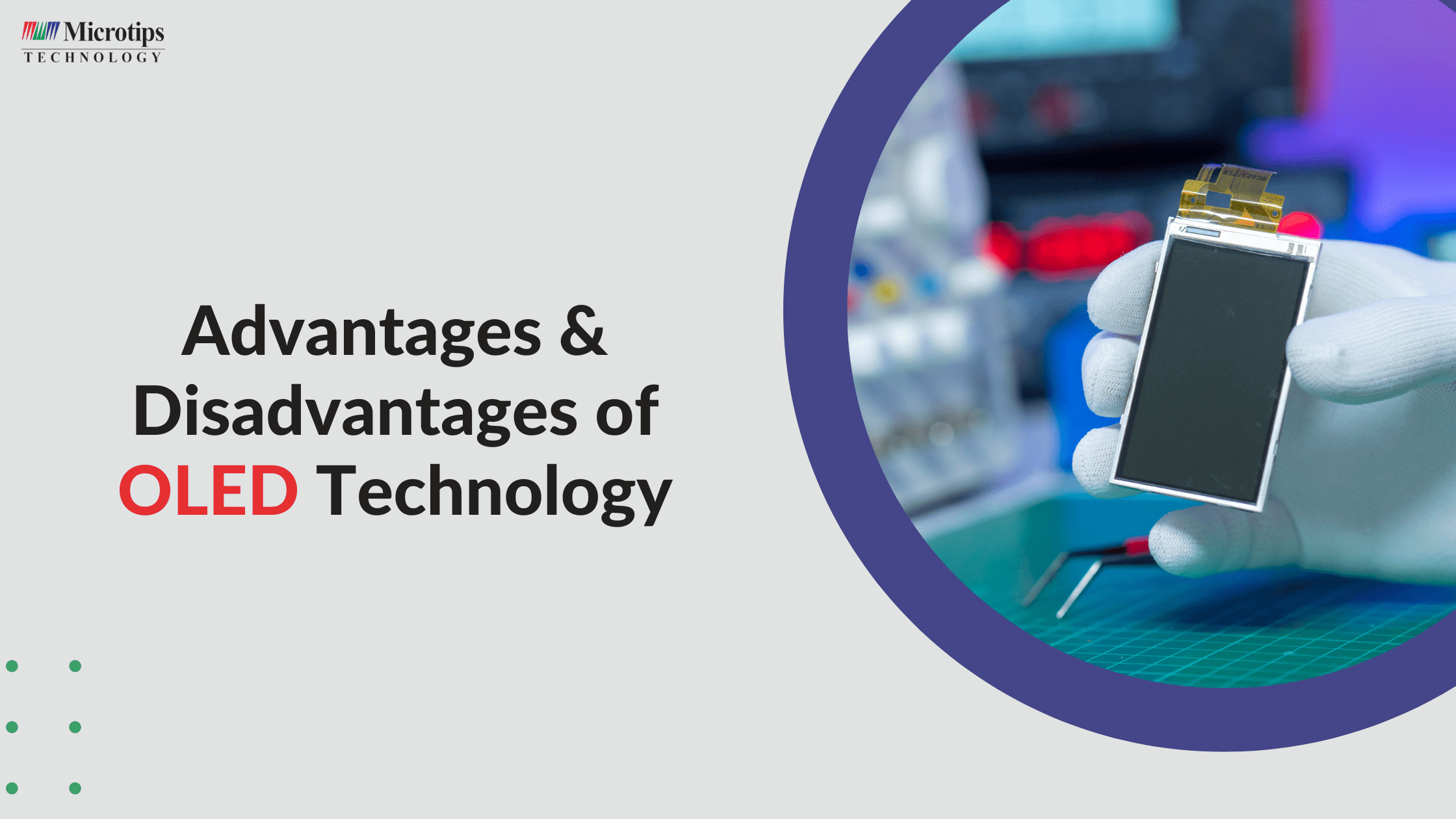Thanks to all the technological advancements made possible by people with great minds and abilities, life has gotten simpler, faster, and more comfortable today. Almost every element of everyone’s life has been dramatically impacted by technology.
And with today’s weblog, we are here with the advantages and disadvantages of OLED technology, but before, let’s understand what OLED technology is all about.
In our previous blog, OLED Displays: AMOLED vs PMOLED, we depicted the OLED displays and their types.
What Is OLED Technology All About?
OLED displays are created by encasing several thin organic sheets between two conductors. An intense light is produced when an electrical current is supplied. A straightforward layout that has several advantages over other display technologies.
The term “OLED” refers to an Organic Light-Emitting Diode, a technology that uses LEDs and emits light made of organic molecules instead of conventional means. The best display panels in the world are thought to be made with these organic LEDs.
OLEDs allow for emissive displays, in which each pixel is individually controlled and generates its light (unlike LCDs, which come from a backlighting unit). OLED displays have excellent visual quality, including vivid colors, quick motion, and a high contrast ratio.
Every technology comes with its advantages and disadvantages to board. Let’s get started with what advantages and disadvantages OLED technology holds.
Advantages Of OLED Technology
The widespread incorporation of small-scale OLED screens into smartphones and other mobile consumer electronics is where OLED technology has perhaps achieved tremendous success. Its remarkable balance between astonishing visual quality and energy efficiency is the leading cause. Consumers today demand high-definition material that can be accessed on demand and while on the go without depleting the battery of their mobile devices. Small OLED panels (such as PMOLED and AMOLED) can render the same HD content with far less power than competing technologies since they can produce high-quality images at low peak brightness levels.
OLED displays are self-emitting light sources and do not require an additional external light source to produce a picture, so they offer an advantage over other displays like TFT LCD. They are more effective as a result. OLED displays can be significantly thinner than other technologies thanks to their self-illumination, and they can even be employed in flexible displays.
OLEDs have a high light-emitting layer, and their substrates are much more flexible than stiff. Plastic or glass, which is typically used in LCDs and LEDs, can be used as the substrate for OLEDs.
Due to the thin organic layers that aid in light emission, LED is less bright than OLED. OLED does not require glass support, which is one of LCD and LED’s key components. OLED systems do not require backlighting, but LCD systems must. LCDs do not display backlight areas.
Disadvantages Of OLED Technology
OLED doesn’t have any drawbacks, although it can result in some issues. Despite how fantastic OLED screens are, they do have certain disadvantages.
Very first, OLED is pricey. It is an expensive technology to produce, and the fact that it is the best display choice makes the situation worse.
Age is the primary foe of OLED. Color deterioration is possible since OLED depends on organic LED. This means that it may have an impact on color harmony and brightness. Color fidelity decreases over time, especially with blue pixels, since they age more quickly than green and red pixels.
Final Thoughts”
OLED technology ensures an immersive viewing experience. OLEDs are simpler to produce. OLED displays that can be bent, folded, or rolled up are widely available. OLEDs are being used in an increasing number of applications, from small-scale ones like smartwatches to large-scale ones like smartphones and TV displays.
As a US-based company, Microtips Technology we have introduced a line of goods that take advantage of the newest OLED technology. Additionally, it is one of the top OLED panel manufacturers. Our products are separate from competitors in the display sector thanks to their rich color and graphics.

